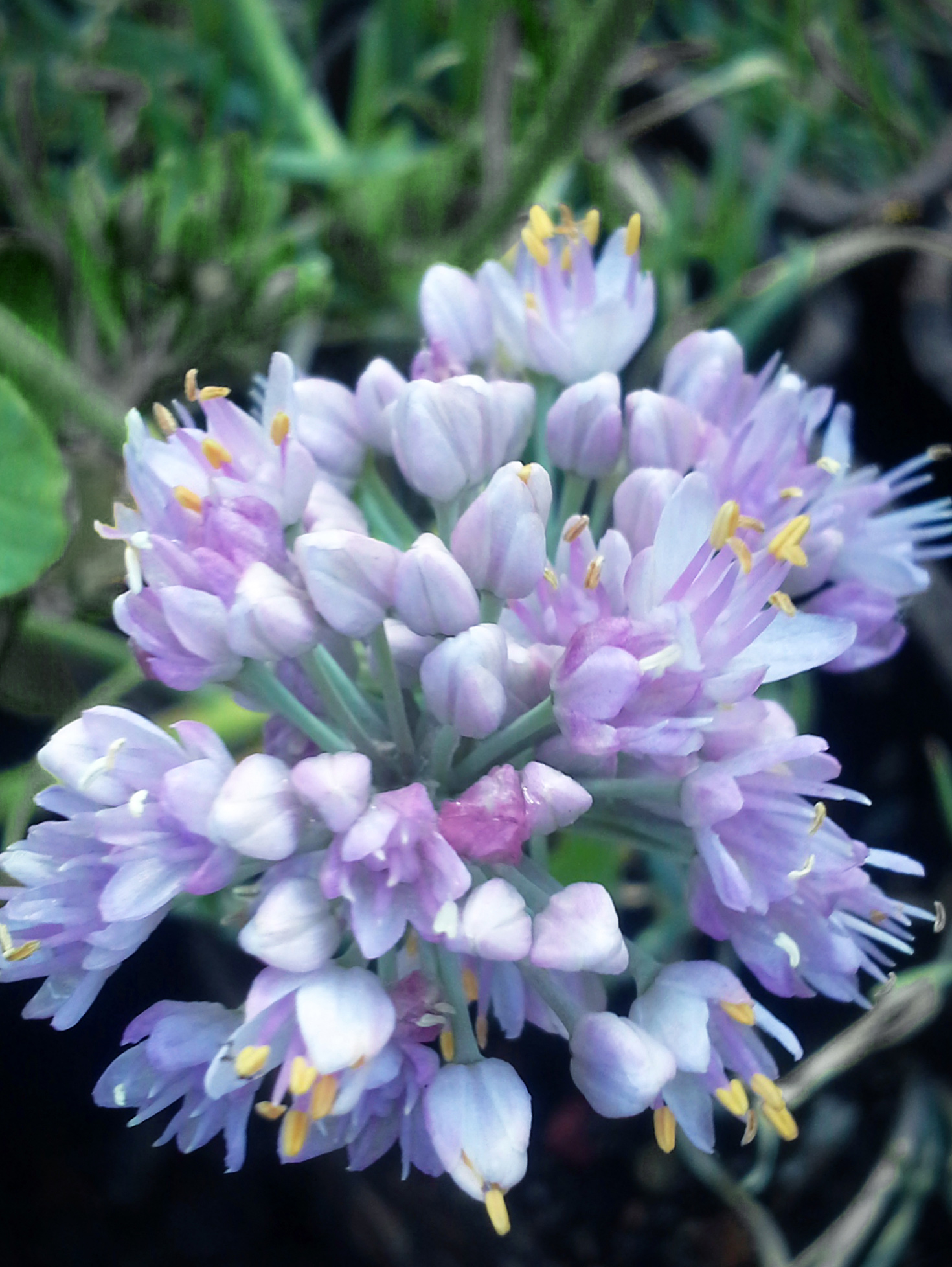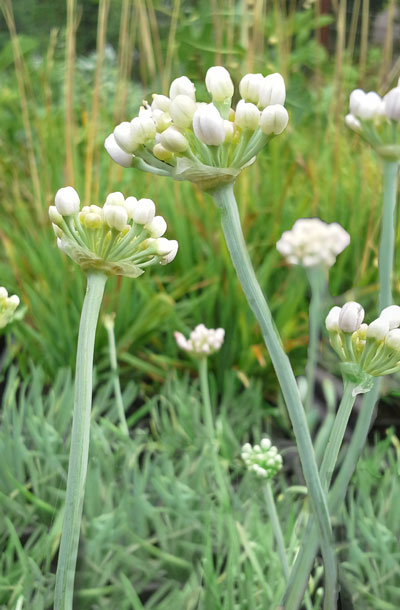
Understated, for the macro-minded among us, Corkscrew Onion is a parade of textures. Though it may be mistaken for a small scale clump grass when out of bloom, the swirling, grass-like leaves are far more interesting as a ground cover. Each plant, when observed closely, is a sculptural study in directional textures, the leaves forming vegetative eddies mimicking the motion of water in a stream. Then , in late summer, the 1 1/2" nosegay blossoms emerge. Beckoning butterflies (and from the looks of the plant, likely dancing fairies!) from afar, the lilac-pink blooms with bright yellow stamens dance above the grassy leaves, perched on their blue-green stems. Reaching about 10"tall in bloom, Corkscrew Onion makes a fantastic small scale ground cover and is exponentially more interesting than lawn grass (although not walkable, unless you are a fairy!)
Easy to grow and care for, this member of the lily family has at its core a true bulb, which stores water and nutrients to feed the plant in times of need. To you and me, this translates into ease of culture and a plant that seems nearly impervious to environmental stressors. In August, when most of the other plants in the garden are looking tired, this little onion is opening its ice pink, fresh as a daisy, pom-pom blooms. The overall cool freshness that it exudes coupled with its intricacy of design, make it highly reccomended for planting along garden paths and at the front of a border.
Plant in full sun to light shade where it will produce offsets and slowly spread to form a cowlick-y mat. Quite drought tolerant, even growing in dry soil, the one thing to look out for to keep your alliums growing vigorously, is soggy soil. If you are one of the few blessed with this condition, plant them in high ground. Other than being water-logged, this cute and curly little plant adapts readily to any soil type. It resists browsing by deer due to its onion-y nature, but may be sampled by humans and is known in some circles as "German Garlic" Native to Asia and Europe and ranging into Siberia, it readily tolerates extremes of heat and cold. A delightful, yet little known plant. |

